It only takes 2 minutes a day.
So why is daily flossing such a big hurdle to overcome?
Let’s be honest, it’s an annoying chore. One we are required to perform at often inconvenient times of the day. It’s not especially easy to complete and seems to make little difference to how our mouth functions on a day to day basis.
The cornerstone in the prevention of oral disease is the daily mechanical disruption of bacterial ‘plaque’ deposits through brushing and flossing. Flossing makes a BIG difference to how our mouth functions on a day to day basis and in the long run, how our body functions too.
It is human nature to believe that things will tend to stay the way they are. If you have never flossed and also never had many dental problems then why shouldn’t that continue? The mindset that “There is no pain in my mouth so it can’t be that bad.” “I’ve gotten away with not flossing for 20 years. Why should I start now?” Or, “My gums always bleed when I floss my teeth, it’s normal for me” can be difficult to shift.
The truth is that our mouth is a constantly degenerating environment. It depends on daily home care (brushing and flossing) and routine dental care to minimize the effects of the inevitable degeneration that occurs over time. From the day we get our first tooth we are faced with the challenge of battling the many different obstacles life throws at our mouth.
For too long we have ignored the importance of good oral health in safeguarding our general health. The flossing you do today has the potential to be even more important later in your life. Research continues to demonstrate the existence of relationships between oral disease (tooth decay, gum disease) and general health conditions such as diabetes, heart disease, stroke, Alzheimer’s, cancer and adverse pregnancy outcomes -to name a few.
Those 2 minutes it takes to floss each day are SO important.
Flossing is a skill that takes consistent effort to master and requires refinement throughout our lifetime to remain effective. At your appointment, let us know how you are going with your flossing. Your Medland Dentist and Hygienist will work with you to identify areas you may need to focus extra attention on and can provide an abundance of information on products and techniques to help you achieve success with your flossing routine.
Consider these tips to help flossing become part of your daily routine:
- It doesn’t matter when you floss! For most people disturbing the bacteria that collects between our teeth once every 24 hours is enough. Consider flossing in the morning rather than the evening, in the shower, after lunch or watching TV. Find a time that works for you so that you can achieve consistency in your routine.
- Try some different brands and/or types of floss. It may take some trial and error to find a floss that is suitable for your teeth. Floss comes in many varieties: thin, thick, waxed, flavoured, ribbon/tape or shred resistant.
- Consider using floss aids such as flossettes or floss handles if regular floss is too difficult to use. We’ve linked some of our favourites here:
- Have you tried an interdental brush? These little brushes are attached to flexible wire on the end of a small plastic stick. They work just like a bottle brush to clean the triangular space in between your teeth. To use, gently push the largest size brush that still fits easily into the space between your teeth. Move the brush around in the space so that the bristles touch the surfaces of the teeth on either side. If you struggle to floss, have retainers from orthodontic treatment or have larger spaces in between your teeth then these could work wonders for you! We’ve linked our favourites here along with a “How to” guide.
- Keep your floss out and ready to use! Out of sight, out of mind. Keep your floss on your bench to prompt you to use it.
- When you wrap your floss around the fingers of each hand try decreasing the length of the floss that spans between your hands. The section of floss you are actively using to pass between your teeth is often far too long. This can make it more difficult to control your flossing technique and can contribute to making flossing feel awkward.
Flossing basics:
- Floss at least once every 24 hours
- Floss between ALL teeth including those at the back of your mouth, around orthodontic retainers, bridges and implants
- Use a piece of floss that is long enough to enable you to easily reach your back teeth (approximately 45cm)
- Take your floss all the way down below your gumline. The first few millimeters of your gums are not attached to your tooth. This ‘pocket’ of unattached gum tissue is where bacteria collects. It’s also one of the areas your toothbrush is unable to access
- Adapt your floss in a ‘C’ curve around each tooth. With the floss still hugging the tooth, use up and down movements to ‘wipe’ the sides of your tooth clean
- Remember to repeat this action for every tooth surface (I.e. there are 2 tooth surfaces to clean every time you pass the floss between your teeth
- Lasso the floss in a ‘C’ curve behind the last tooth in each part of the mouth
- Don’t forget to use this same technique to clean either side of teeth with no neighbor
- Start at one end of your floss, gradually moving along to use a clean section for each new area.
Regular bleeding when you floss isn’t normal. Bleeding could be the result of over-zealous flossing or slipping and ‘cutting’ your gum tissue. In most cases however, bleeding when flossing is a sign of inflammation and infection caused by not flossing often or well enough. By not disturbing the ‘plaque’ bacteria that grows on our teeth often or well enough.
Use this bleeding as a tool to guide you to know how you are going with your flossing. Gum infection is a ‘silent’ disease with little or no pain or other symptoms noticed until it is in its most advanced stages.
If our hands bled each time we washed them, or our scalp bled whenever we washed our hair, we would be VERY concerned. It should be the same when we floss our teeth. Bleeding gums are infected gums. We wouldn’t just ignore infection in any other part of our body. So why do we ignore it in our mouth?
Look for bleeding when you’re brushing or flossing. Try to work out when it happens or which areas are bleeding. Increasing the frequency of flossing or paying a little more attention to your flossing ‘technique’ should resolve most bleeding within a few days. Persistent bleeding is important to discuss with your Dentist or Hygienist.


